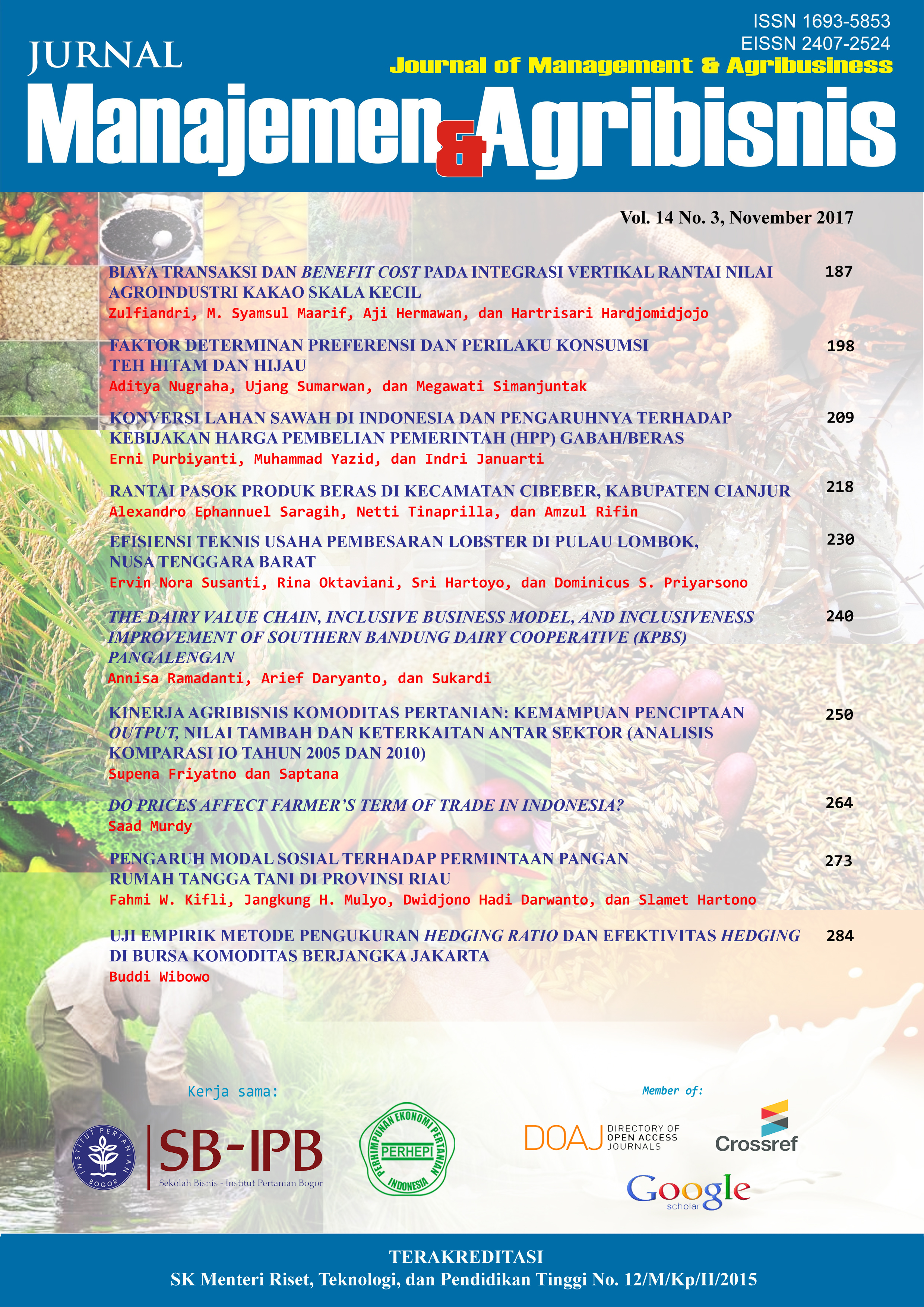The Dairy Value Chain, Inclusive Business Model, and Inclusiveness Improvement of Southern Bandung Dairy Cooperative (KPBS) Pangalengan
Abstract
There is an opportunity for smallholder dairy farmers to grow in meeting the increasing demand of milk and milk products in Indonesia. IBM is a suitable method for smallholder improvement. KPBS Pangalengan is one good example of institution which implements IBM. This research aims to analyze KPBS Pangalengan’s current dairy value chain, business model, inclusiveness, as well as the possible areas of improvement for its inclusiveness respectively using VCM, BMC, and NBM Principles. Based on the result of this research, there is a tendency of declining fresh milk production in dairy farmer level and a tendency of Milk Processing Industry (MPI) as the chain leaders due to their domination along the chain. Other customer perspective business models have their most weaknesses. The weakest area of KPBS Pangalengan inclusiveness is measurement of outcome area. The four areas of improvement for KPBS Pangalengan inclusiveness include fresh milk production area, IT support area for the downstream side, potential diversifications area (agritourism and milk café concept), and measurement of outcome area.
Keywords: inclusiveness, KPBS Pangalengan, Milk Processing Industry, smallholders, value chain
Authors
Authors who publish with this journal agree to the following terms:
- Authors retain copyright and grant the journal right of first publication with the work simultaneously licensed under a Creative Commons Attribution License that allows others to share the work with an acknowledgement of the work's authorship and initial publication in this journal.
- Authors are able to enter into separate, additional contractual arrangements for the non-exclusive distribution of the journal's published version of the work (e.g., post it to an institutional repository or publish it in a book), with an acknowledgement of its initial publication in this journal.
- Authors are permitted and encouraged to post their work online (e.g., in institutional repositories or on their website) prior to and during the submission process, as it can lead to productive exchanges, as well as earlier and greater citation of published work (See The Effect of Open Access).

